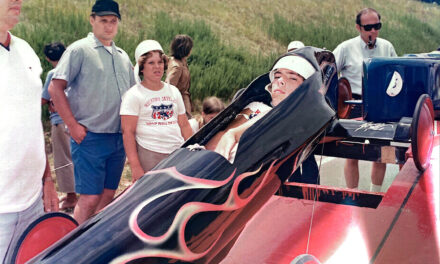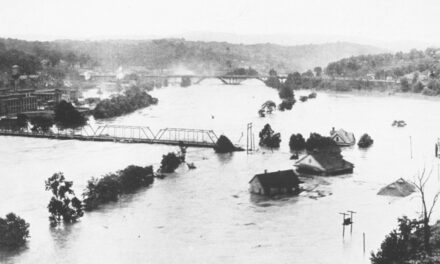
Lenoir-Rhyne University has its origin in Hickory, but in 1923 those roots were almost torn from the ground upon which it now stands. Started in 1891 as Highland, then Lenoir College, the 1920s was a time of uncertainty for the school that bore the name of W.W. Lenoir, the grandson of William Lenoir, patriot soldier from the tide-turning battle of Kings Mountain in the American Revolution. Textile entrepreneur Daniel Rhyne lent his money and his name to the institution of higher learning when it needed funds for expansion.
However, throughout the summer of 1923, a war raged over the question of whether L-R would remain in Hickory. Having a college in town had become very fashionable and a number of area towns wanted one. They were not averse to pinching one from another city, if they could.
Rhyne initially came to the rescue of Lenoir College when it needed help. However, he remained unhappy over the lack of broad-based support for the school. “The people of Hickory have had the college for a long time and have done nothing much for it,” he said in print. Those words opened the door to other towns looking to add a college to their list of attractions, much like Salisbury had acquired from Newton with Catawba College. When other municipalities expressed an interest in moving Catawba County’s last remaining college, Rhyne, out of the blue, offered to bankroll the interlopers.

The Daniel E. Rhyne Building, at the center of Lenoir-Rhyne University. A hundred years ago, he offered to help the school leave, then stay in Hickory.
Gastonia made the first move. They volunteered 100 acres and Rhyne pledged $265k to see it happen. He even strong armed his cotton mill workers to give $5 each. Then Mt. Holly (also in Gaston County) made a play. They claimed that since the town was the birthplace of Daniel Efird Rhyne, a post-secondary school bearing his name should be established there. They had land along the railroad line and near a major highway. Since Rhyne had made his home in Lincolnton, they got in on the effort too, calling it “the logical choice” for relocation.
Leaders in Hickory did not wait passively to see if their beloved Bears would find a new lair. The contributed adjacent land to expand the campus and develop funding sources to keep L-R right where it was, a mile northeast of the downtown business district. As we know from where it now sits, the retention effort worked.
The whole affair was no slam dunk. The college appointed a commission to study all the offers and make a recommendation. The meeting dragged on for 12 hours before a final vote decided the issue. In the end, the group rejected efforts to go by an 11-2 margin.
As much as funding mattered, land was the primary concern. Staying in Hickory meant a smaller campus than what the other cities offered. Once local assistance kicked into gear, the footprint of L-R totaled almost 40 acres. It has since expanded.
So, 100 years later, the university is now where it began. Much of its expansion, especially in recent years, has been its establishment in other cities, not across the street. Lenoir-Rhyne remains a Hickory institution, a strong part of the community it calls home.









